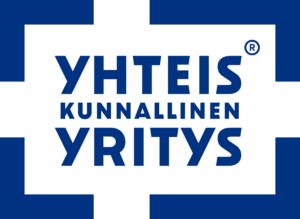Professor Peter Hawkins is a leading consultant, coach, writer and researcher in organisational strategy, leadership, culture change and team and board development. He has coached many boards and senior executive teams, enabling them to develop their purpose and collective leadership and strategy for the future. Hawkins is also one of the experts in HY+’s team coaching programme. Here are his 13 one-liners on Systemic Team Coaching.
1. Treat every difficulty as your next teacher sent from the wider system
Our choice is either to view difficult coachees, colleagues, bosses, organizations as problems to battle against, or as people who we have not yet found a way of connecting with and who thus present our next life lesson.
2. If you fill the meeting room with the voices of the stakeholders there is less room for egos
As human beings we tend to be self-obsessed and take things personally, which builds defensive egos. If we focus on what the future and our stakeholders need from us and bring their voices into the room, there is far less space for egos and personal conflict.
3. ABC of team coaching – Always Be Contracting
Thank you to my colleague John Hill from Northern Ireland who taught me this phrase – contracting is not something we do just at the beginning of relationship or start of a meeting – it is something we need to constantly attend to.
4. Systemic Team Coaching does not end – the prime responsibility just transitions from the team coach to our partners in the team coaching, the team leader and the team members
As teams have to continually develop their collective capacity and agility responding to ever-changing contexts, systemic team coaching will always be necessary. The job of the external team coach is to work with the team so they can gradually take over the full responsibility for coaching themselves.
5. Get every voice into the meeting within the first three minutes
If the coach talks too long at the beginning it becomes a seminar; if the team leader talks too long it becomes a briefing meeting.
6. Team members are more likely to own the agreed ways forward when they have been part of creating them
People don’t resist change; they resist being changed. The role of the team leader is to frame the challenges and then orchestrate the team members to co-create the ways of responding.
7. How you say something non-verbally is more important than the words
Learning good team coaching questions and other interventions is not just about the words but about the tonality, look and embodied way we deliver it.
8. Always locate the challenge, problem or conflict in a relationship, not in a person or a part of the system
All real challenges are relational.
9. Turn blame statements into requests and negative injunctions to positive encouragements
One of the most frequent interventions we need to do as team coaches is to interrupt blame statements, whether about another member of the team, or external stakeholder, and invite the person to turn the complaint into a request and/or curious inquiry.
10. Avoid bullet point lists that fragment the challenge into lists of problems.
Instead create mind maps, virtuous and vicious cycles and other methods that show the patterns of interconnection.
11. As soon as we talk about ‘the system’ we stop seeing systemic interconnections because we have drawn a fixed boundary where none exist
Pay attention to the dance between the many systemic levels.
12. Wide-angled empathy is not just for the people in the team but for all the team’s stakeholders
The team coach needs to have compassion and empathy for all team members but also for all the wider stakeholders of the team (an themselves).
13. There is no such thing as a high performing team, only a team that continuously co-creates value with and for all its stakeholders
High performance is not a place of arrival, but is always in service of continually co-creating value with and for all our stakeholders, including people, systems and the more-than-human world. Therefore, high performance cannot reside within the team’s boundaries, or be owned by the team.
Writer: Professor Peter Hawkins









